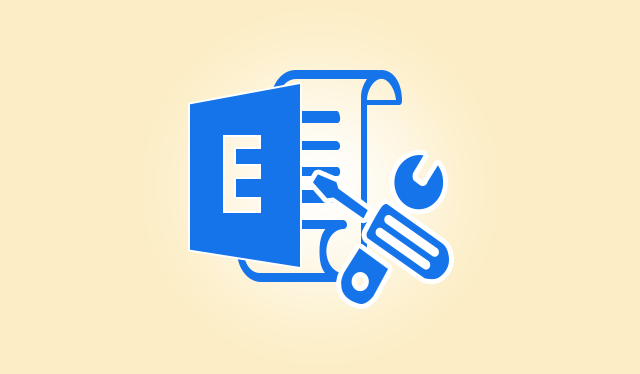Resolve Error JET_errRecordNotFound, The key was not found
Some of the Exchange Server Errors may act as the obstacle in the database processing and it may result in the freezing of server. One of the most common Exchange Server is JET_errRecordNotFound, The key was not found. This blog will describe this critical issue in detail and will also explain the main causes of its occurrence. The simple approaches to fix this error and Exchange 2010 database repair tool will also be discussed.
Overview: JET_errRecordNotFound, The key was not found
This Encountered error is an Exchange JET error. When a user mounts the Exchange database and access mailboxes from Exchange Server, then this type of issue occurs. Depending upon the number of parameters, 1601 and 1602 are the two error codes which are assigned to this error. These errors are built on JET Blue engine technology, that is why Occurrences of such errors are common in Exchange Server. When this issue is encountered by any user, the following message displays:
Operation terminated with error -1601 (JET_errRecordNotFound, The key was not found) after 2.354 seconds.
Reasons Behind This Error “JET_errRecordNotFound, The key was not found”
Below-discussed are the few causes due to which this common Jet Error Occurs:
- The Exchange Transaction Log Files cannot be accessed as they are damaged or corrupted.
- STM file structure could be damaged, if a user uses ESEUTIL utility for some purpose in Exchange Server. This utility command does not give surety that it will work correctly with every version of the database, that is why the structure of STM files is manipulated.
Read Also: Exchange Eseutil Jet Error 1811
Techniques to Resolve This Error
In order to fix this error, the three techniques are discussed here. Users can use any of the three techniques to recover data from their corrupted database in its healthy state.
Approach 1: Extract Data from Backup File
If the backup is created and continuously modified by the end users, then the best method is to extract the database from that backup. This will reduce the chances of error in future because this file extracts all the log files in the healthy state.
Approach 2: ESEUTIL & ISINTEG Utility Command
It is one of the most widely used approaches for repairing the damaged database files. The steps to execute ESEUTIL & ISINTEG utility based commands are discussed below:
- If the user is using ESEUTIL utility command, then they can use any one of the below shown ESEUTIL switches to resolve the issue:
ESEUTIL/p: Repairing Corrupted Database ESEUTIL/c: Restoring Information ESEUTIL/g: Verifying Database Integrity ESEUTIL/y: restoring information
- After executing the commands, you may use ISINTEG utility as it will help to restore and resolve the “JET_errRecordNotFound, The key was not found” issue, after repairing and extracting the data.
Approach 3: Automated Alternative Solution
If the above-discussed manual techniques are not capable to resolve your issue, then you can simply opt for a third- Party Automated Approach. These utilities help users to recover Exchange Server mailboxes from corruption in a hassle-free manner.
One of the many such software is Exchange Recovery Tool. It helps to recover Exchange Data from damaged EDB file and export mailboxes to Live Exchange Server, Office 365, and multiple file formats. Moreover, the Exchange 2010 Database repair tool has various productive features embedded with it, helping end-users to fix their problems without any complications.
Scan mode option (Quick and Advance scan) of this utility easily recover offline/dismounted EDB file from corruption with no data loss. For the minimal corrupted Exchange database file, click on quick scan and for highly corruption select the advance scan. This option also recovers permanently deleted Exchange mailboxes and items from loaded EDB file.
The software supports both public and private Exchange database file. Users can easily recover & repair pub1.edb file along with priv1.edb file from corruption. It export the recovered & healthy various Exchange mailboxes such as: user, archive, legacy, disconnected, shared and item – notes, tasks, mails, journals, contacts, calendars to various file formats.
You can extract mailbox from offline EDB to HTML, EML, PST, MBOX, PDF, MSG format in a single shot. This tool automatically generate the export report of export Exchange data like – EDB to PST, etc.. in CSV file format which stores the success and fail count of exported data.
Key Features Of Automated Software
- Dual scanning option perform Exchange Mailbox Corruption
- Preview recovered and healthy mailbox items before conversion
- Export Exchange data selectively using categories and date filter option
- Preserve original folder hierarchy and keep metadata intact
- Convert EDB to PDF, MSG, MBOX, HTML, EML, PST file format
- Option to remove email encryption (SMIME/OpenPGP) from Exchange EDB mailboxes
- Compatible with all Exchange Server, MS Outlook, and Windows OS version
Conclusion
After discussing JET error(JET_errRecordNotFound, The key was not found) and workarounds to fix it. We can conclude that such errors can be easily technical as well as non-technical users. If the backup is available with the user, then it is very easy to restore the data from backup file. If the user is not having the backup of the Exchange file, then the best technique is to use Exchange Recovery utility because using this application, users will be able to recover the Exchange database files in a user-friendly manner.


